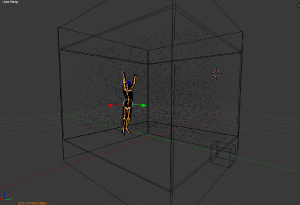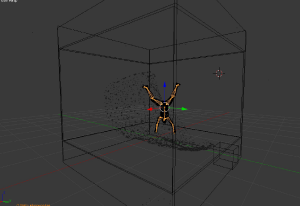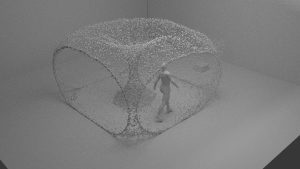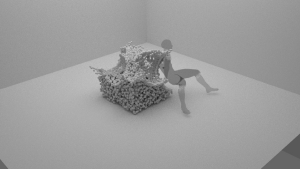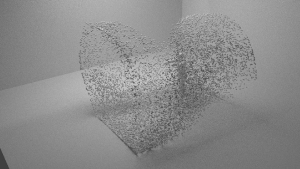| Line 40: | Line 40: | ||
==== Biometric Architecture ==== | ====Biometric Architecture==== | ||
:Usage of biometric data simulating human activities, flows and actions to recreate virtual scenarios and integrate them into a process of design. | |||
The body motion will buy used to define boundaries or flow patterns that could help to understand space within time, and likewise to analyze design challenges in a different way. | |||
A phenomena will be produce by defining principles of physics, recreating a set of events developed through the manipulation of different rules of physics. Thus, the body will trigger this scenarios in a unique way. As nature does. | |||
The rules to set up experimental scenarios are the ones offered by particles systems, establishing variants in forces, events and properties. | |||
In this directions, the body could work as an erosion agent to hollow space in virtual matter, or as a force that will expand or twist around its own core the particles that occupy certain area, as well as the encounter of forces from many bodies in the space. | |||
==== Renders ==== | ==== Renders ==== | ||
Revision as of 11:56, 4 January 2016
Concept and organization
Idea
Biometric data and spatiality: An architectural approach
- Use biometric data to displace different kind of forces in the body (hands, core, legs, etc.) like magnets, turbulence and vortices, to manipulate the flow of particles. The definition of space will be created by modifying the density of particles in certain areas and also by printing body postures on particles, using the whole body as a tool of design.
Movements
- Walking around
- Movements with arms and hands
- Movements down in the floor
- Jumps
Time of recording
- 15:00 minutes
Number of participants
- 1 person
Screenshot
Presentation
Biometric Architecture
- Usage of biometric data simulating human activities, flows and actions to recreate virtual scenarios and integrate them into a process of design.
The body motion will buy used to define boundaries or flow patterns that could help to understand space within time, and likewise to analyze design challenges in a different way. A phenomena will be produce by defining principles of physics, recreating a set of events developed through the manipulation of different rules of physics. Thus, the body will trigger this scenarios in a unique way. As nature does. The rules to set up experimental scenarios are the ones offered by particles systems, establishing variants in forces, events and properties. In this directions, the body could work as an erosion agent to hollow space in virtual matter, or as a force that will expand or twist around its own core the particles that occupy certain area, as well as the encounter of forces from many bodies in the space.
Renders
Next explorations until beginning of January
- Perform more experiments using different parameters and properties in particles
- Experiment with fluids
- Perform experiments with two or more actors in the space
- Find new conceptual approaches in design using biometric data
